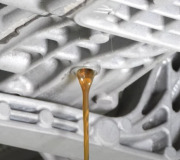I did not mean to intrude. We were typing at the same time.
I have never had a problem with old gas, but that is quite different than what I hear from people in other parts of the country. If the level is low in the tank, I would add fresh gas so the engine had something to burn, but stale gas will still burn once it has some good stuff to go with it, as long as it has not turned to varnish.
The two things I should have elaborated on with the carburetor are the gaskets and the needle and seat. Seals can dry out and shrink. They might seal again once they get wet. If the gas turned to varnish, the needle could be stuck and will not allow gas into the float bowl. Chances are the gas evaporated out of the float bowl and the needle opened up. Now corrosion or mold has formed on the seat and it will not seal. The bowl will overflow and the excessive gas will stall the engine. Watch out that a backfire does not start the engine on fire. If you get past the first few minutes, the detergents in the new gas should clean up the needle and seat.
I do have a problem with my Volare after it sits for many months. The gas evaporates out of the float bowl and goes into the charcoal canister. There was a service bulletin about adding a check valve to prevent the resulting long crank time. I have that valve but never bothered to install it. I have another problem that occurs when I purposely run it out of gas when checking the fuel mileage. The mechanical fuel pump will not draw a prime out of the tank when it is running at engine-cranking speed. I have to dribble some gas into the carburetor. It is a six-cylinder engine with really long intake runners so it is almost impossible to flood the engine. It will run as long as four or five seconds before that gas is used up. Sometimes I have to do that three times before gas is being pulled by the pump. Then the engine runs fine.
A lot of people worry too much about the oil, but that deteriorates from heat and blow-by. The oil itself has no more chance of going bad than if it had been sitting in the quart container on a shelf. What I do not know is once the oil has gone through a few heat cycles, how does that affect the life of the many additives in it?
I would go beyond suggesting the battery will be drained. The plates will be sulphated, and even if it is charged for days at a real slow rate, it is not coming back. There are people who say putting a really high pulsing voltage on it can restore it and boil the sulfation off. There are even special battery rejuvenators that claim to do that, but I have never seen or used one. Just plop in a new battery so you know there is one less thing to worry about.
If there was any one thing I would worry about most, it would be the transmission. Transmission fluid is going to slowly drain out of the clutch packs. That will leave the fiber plates and rubber lip seals exposed to air, and they'll dry out. When we rebuild a transmission, we always soak the new plates in transmission fluid before installing them. The seals get well-lubricated too. Over time those lip seal become hardened and brittle. They do not hardly flex much at all in operation, but when we pull one apart, those seals come out in chunks like little rocks. If you bend a piece, it cracks.
Dry fiber plates will become chewed up very quickly. To reduce the chance of damage, drive the car very gently at first with little load on the transmission. You might even consider shifting trough all the gears so you know every clutch pack has filled with fluid, then let it sit for a few hours so the fiber plates can soak in that fluid.
Sunday, April 8th, 2018 AT 6:20 PM


